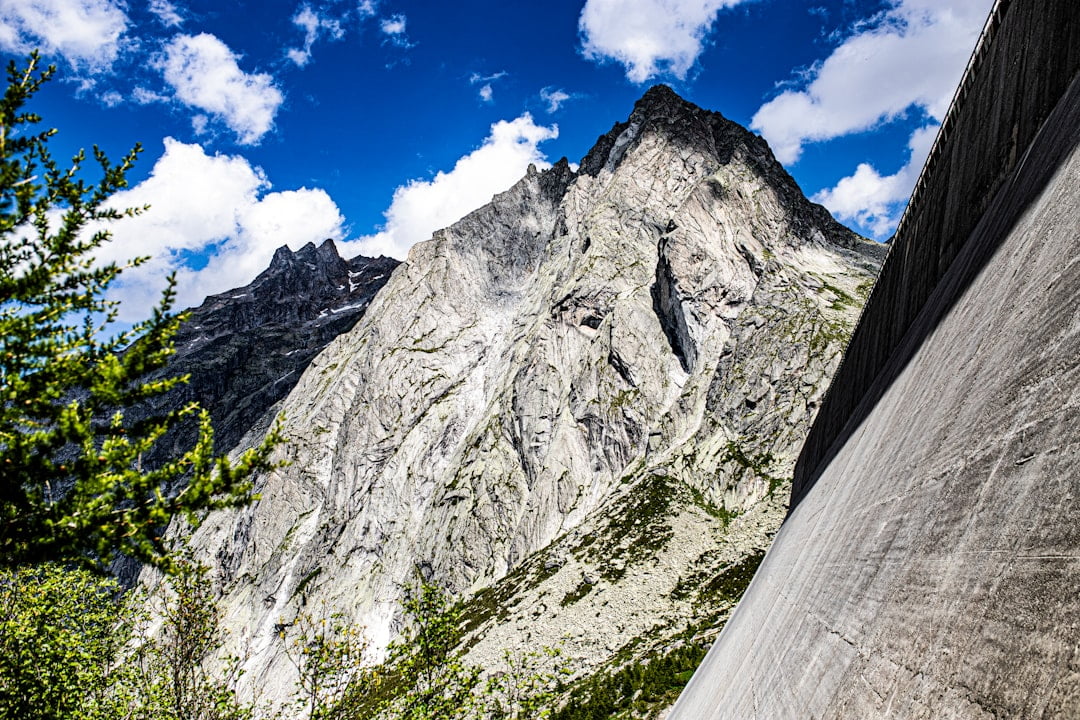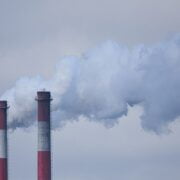
The Cost of Inaction: Understanding the Economics of Climate Change
Climate change is one of the most pressing issues facing our planet today. The scientific consensus is clear – human activities, particularly the burning of fossil fuels, are causing the Earth’s temperature to rise at an alarming rate. This increase in temperature is leading to a wide range of consequences, including rising sea levels, more frequent and severe extreme weather events, and disruptions to ecosystems and biodiversity.
The cost of inaction on climate change refers to the economic, social, and environmental costs that will be incurred if we fail to take action to mitigate and adapt to climate change. These costs are not just theoretical – they are already being felt around the world. From increased healthcare costs to damage to infrastructure and loss of agricultural productivity, the cost of inaction is substantial and will only continue to grow if we do not take immediate action.
Key Takeaways
- Inaction on climate change will have significant costs for the global economy and society.
- Climate change will have a negative impact on global GDP, with estimates ranging from 1-5% by 2100.
- Agriculture and food security will be severely impacted by climate change, leading to food shortages and price increases.
- Sea level rise will have economic implications, including damage to infrastructure and loss of coastal property.
- Climate change will have negative impacts on human health and wellbeing, including increased disease transmission and mental health issues.
The Economic Impact of Climate Change on Global GDP
The economic impact of climate change on global GDP is significant. According to a report by the Intergovernmental Panel on Climate Change (IPCC), if we fail to limit global warming to 1.5 degrees Celsius above pre-industrial levels, global GDP could decline by up to 2% by 2100. This may not sound like a large number, but it represents trillions of dollars in lost economic output.
Climate change affects different sectors of the economy in different ways. For example, agriculture is particularly vulnerable to changes in temperature and precipitation patterns. Droughts, heatwaves, and floods can all lead to reduced crop yields and increased food prices. The World Bank estimates that by 2030, climate change could push an additional 100 million people into extreme poverty, primarily due to its impact on agriculture.
Other sectors that are vulnerable to climate change include tourism, energy, and insurance. Rising temperatures can make certain destinations less attractive for tourists, leading to a decline in revenue for businesses in the tourism industry. Extreme weather events can also disrupt energy infrastructure, leading to power outages and increased costs for consumers. Additionally, insurance companies may face higher payouts due to increased claims related to climate-related disasters.
The Cost of Climate Change on Agriculture and Food Security
Climate change poses a significant threat to global food security. Changes in temperature and precipitation patterns can lead to reduced crop yields, increased pest and disease pressure, and changes in the availability of water for irrigation. These impacts can have serious economic consequences.
According to the United Nations Food and Agriculture Organization (FAO), climate change could reduce crop yields by up to 25% by 2050. This would not only lead to higher food prices but also increase the risk of hunger and malnutrition, particularly in developing countries that are already vulnerable to food insecurity.
The economic cost of these impacts is substantial. The World Bank estimates that by 2050, the cost of climate change on agriculture could reach $1.4 trillion per year. This includes both direct costs, such as crop losses, as well as indirect costs, such as increased healthcare expenses due to malnutrition and foodborne illnesses.
The Economic Implications of Sea Level Rise
| Metrics | Description |
|---|---|
| Coastal flooding | The increase in sea level will lead to more frequent and severe coastal flooding, which can damage infrastructure and property. |
| Displacement of people | As sea levels rise, people living in low-lying coastal areas may be forced to relocate, leading to social and economic disruption. |
| Loss of biodiversity | Rising sea levels can lead to the loss of coastal habitats, which can have negative impacts on biodiversity and ecosystem services. |
| Increased insurance costs | As the risk of coastal flooding increases, insurance costs for coastal properties may rise, leading to higher costs for homeowners and businesses. |
| Infrastructure damage | Rising sea levels can damage infrastructure such as roads, bridges, and ports, leading to costly repairs and disruptions to transportation networks. |
| Decline in property values | As the risk of coastal flooding increases, property values in vulnerable areas may decline, leading to economic losses for homeowners and investors. |
Sea level rise is one of the most visible and tangible impacts of climate change. As temperatures rise, glaciers and ice sheets melt, causing the oceans to expand. This, combined with the thermal expansion of seawater, is leading to a rise in sea levels around the world.
The economic implications of sea level rise are significant, particularly for coastal communities and infrastructure. According to a study published in the journal Nature Communications, by 2100, sea level rise could cost coastal cities around the world $1 trillion per year in damages and lost economic output.
Coastal communities are particularly vulnerable to sea level rise due to their proximity to the ocean. Rising sea levels can lead to increased flooding, erosion of coastlines, and saltwater intrusion into freshwater sources. This can damage homes, businesses, and infrastructure, leading to costly repairs and disruptions to local economies.
In addition to the direct costs of sea level rise, there are also indirect costs to consider. For example, coastal tourism and recreation industries may suffer as beaches become eroded and less attractive to visitors. Furthermore, the loss of coastal ecosystems, such as mangroves and coral reefs, can have economic consequences, as these ecosystems provide important services such as storm protection and habitat for fish and other marine species.
The Cost of Climate Change on Human Health and Wellbeing
Climate change has significant implications for human health and wellbeing. Rising temperatures can lead to increased heat-related illnesses and deaths, particularly among vulnerable populations such as the elderly and those with pre-existing health conditions. Changes in precipitation patterns can also lead to an increase in waterborne diseases such as cholera and dengue fever.
The economic cost of these impacts is substantial. According to a report by the World Health Organization (WHO), the direct health costs of climate change are estimated to be between $2-4 billion per year by 2030. This includes costs associated with healthcare services, medications, and lost productivity due to illness.
In addition to the direct health costs, there are also indirect costs to consider. For example, climate change can lead to increased mental health issues such as anxiety and depression, particularly among those who have experienced extreme weather events or displacement due to climate-related disasters. These mental health issues can have economic consequences, including increased healthcare costs and reduced productivity in the workforce.
The Economic Benefits of Mitigating Climate Change
While the economic costs of climate change are significant, there are also economic benefits associated with taking action to mitigate climate change. Transitioning to a low-carbon economy can create new jobs and stimulate economic growth.
For example, investing in renewable energy sources such as solar and wind can create jobs in the manufacturing, installation, and maintenance of renewable energy infrastructure. According to a report by the International Renewable Energy Agency (IRENA), the renewable energy sector employed 11 million people globally in 2018, and this number is expected to continue to grow.
In addition to job creation, transitioning to a low-carbon economy can also lead to cost savings. For example, investing in energy efficiency measures can reduce energy consumption and lower energy bills for households and businesses. According to a report by the International Energy Agency (IEA), energy efficiency measures could save the global economy $2.8 trillion by 2040.
The Cost of Climate Change on Biodiversity and Ecosystems
Climate change poses a significant threat to biodiversity and ecosystems around the world. Changes in temperature and precipitation patterns can disrupt ecosystems, leading to shifts in species distributions, increased extinction rates, and changes in ecosystem services.
The economic cost of these impacts is substantial. According to a report by the Intergovernmental Science-Policy Platform on Biodiversity and Ecosystem Services (IPBES), the economic value of ecosystem services provided by nature is estimated to be $125-140 trillion per year. These services include things like pollination, water purification, and carbon sequestration.
Climate change can disrupt these ecosystem services, leading to economic losses. For example, changes in temperature and precipitation patterns can affect crop pollination by bees and other insects, leading to reduced crop yields. Additionally, changes in rainfall patterns can affect water availability for agriculture and other industries, leading to increased costs for irrigation or reduced productivity.
The Economic Impact of Extreme Weather Events
Extreme weather events such as hurricanes, floods, and wildfires are becoming more frequent and severe due to climate change. These events can have significant economic impacts, particularly on infrastructure and communities.
According to a report by the United Nations Office for Disaster Risk Reduction (UNDRR), the economic losses from extreme weather events have more than tripled over the past 30 years. In 2019 alone, the cost of extreme weather events was estimated to be $150 billion.
These costs include both direct costs, such as damage to buildings and infrastructure, as well as indirect costs, such as disruptions to supply chains and increased insurance premiums. For example, after a hurricane or flood, businesses may be forced to close temporarily or permanently, leading to job losses and reduced economic activity in affected areas.
The Cost of Climate Change on Tourism and Recreation
Climate change poses a significant threat to the tourism and recreation industry. Rising temperatures can make certain destinations less attractive for tourists, particularly those that rely on winter sports or outdoor activities. Changes in precipitation patterns can also affect the availability of water for recreational activities such as boating and fishing.
The economic cost of these impacts is substantial. According to a report by the World Travel & Tourism Council (WTTC), climate change could cost the global tourism industry $24 billion per year by 2030. This includes both direct costs, such as reduced revenue for hotels and airlines, as well as indirect costs, such as job losses in the tourism sector.
In addition to the economic costs, there are also social and cultural costs to consider. Many communities around the world rely on tourism as a major source of income and employment. If these communities are unable to attract tourists due to climate change impacts, they may face economic hardship and social disruption.
The Economic Opportunities of Adapting to Climate Change
While there are significant economic costs associated with climate change, there are also economic opportunities associated with adapting to climate change. Investing in climate adaptation measures can create new jobs and stimulate economic growth.
For example, investing in infrastructure that is resilient to climate change impacts can create jobs in construction and engineering. This includes things like building seawalls to protect coastal communities from sea level rise, or upgrading water and wastewater systems to handle increased precipitation and flooding.
In addition to job creation, investing in climate adaptation measures can also lead to cost savings. For example, implementing measures to reduce the risk of wildfires, such as prescribed burns and forest thinning, can reduce the cost of firefighting and property damage. According to a report by the Union of Concerned Scientists, every $1 invested in wildfire prevention can save $6 in firefighting costs.
The cost of inaction on climate change is substantial and will only continue to grow if we fail to take immediate action. From the economic impacts on global GDP to the costs on agriculture, human health, and biodiversity, climate change poses a significant threat to our planet and our economies.
However, there are also economic benefits associated with taking action to mitigate and adapt to climate change. Transitioning to a low-carbon economy can create new jobs, stimulate economic growth, and lead to cost savings. Investing in climate adaptation measures can also create jobs and reduce the economic costs of climate-related disasters.
It is clear that the cost of inaction on climate change far outweighs the cost of taking action. It is imperative that individuals, businesses, and governments around the world take immediate steps to reduce greenhouse gas emissions, transition to renewable energy sources, and invest in climate adaptation measures. By doing so, we can not only mitigate the economic costs of climate change but also create a more sustainable and prosperous future for all.
If you’re interested in delving deeper into the economics of climate change, I highly recommend checking out this insightful article on Wave Magnets. Titled “The Economic Implications of Climate Change: A Comprehensive Analysis,” it provides a comprehensive analysis of the economic consequences of climate change and offers valuable insights into potential solutions. To gain a better understanding of the intricate relationship between economics and climate change, click here to read the article: https://wavemagnets.com/sample-page/.
FAQs
What is the economics of climate change?
The economics of climate change refers to the study of the economic impact of climate change and the costs and benefits of policies and actions to mitigate or adapt to its effects.
What are the economic impacts of climate change?
Climate change can have significant economic impacts, including damage to infrastructure, loss of agricultural productivity, increased healthcare costs, and reduced economic growth.
What are the costs of mitigating climate change?
The costs of mitigating climate change can vary depending on the policies and actions taken, but generally involve investments in renewable energy, energy efficiency, and other low-carbon technologies.
What are the benefits of mitigating climate change?
The benefits of mitigating climate change include reduced greenhouse gas emissions, improved air and water quality, increased energy security, and reduced dependence on fossil fuels.
What are the costs of adapting to climate change?
The costs of adapting to climate change can vary depending on the level of adaptation needed, but generally involve investments in infrastructure, such as sea walls and flood protection, and changes in land use and agricultural practices.
What are the benefits of adapting to climate change?
The benefits of adapting to climate change include reduced damage to infrastructure, improved public health, and increased resilience to extreme weather events.
What role do governments play in addressing the economics of climate change?
Governments play a critical role in addressing the economics of climate change by implementing policies and regulations to reduce greenhouse gas emissions, promote renewable energy and energy efficiency, and support adaptation efforts.


















